5 Long-Term LMS Benefits for Schools and Universities
The COVID-19 pandemic has been an unprecedented disruptive force in everyone’s lives, including those that work at schools, colleges, and universities. Shutdowns have left educators scrambling to find software solutions to bring their classrooms online in order to continue teaching students at home.
At Software Advice, we’ve seen what this scramble looks like first-hand. Our software advisors have talked to over 200% more educators than average this month, who have asked for our help finding the right learning management system (LMS) to host virtual classrooms, assign homework, and facilitate class discussions.
Many are looking for a quick fix—an affordable band-aid solution to just finish out the school year or the rest of 2020. Capterra has a list of some great free LMS options if you’re in this group.
Those that can swing it, though, should take advantage of this opportunity to invest in an LMS solution long-term. Why? As we’ll explain here, a comprehensive LMS platform can bring benefits to your institution long after this crisis is over and class is back in session.
5 LMS benefits for schools and universities
1. An LMS saves you money
To be clear, an LMS is a significant investment. Depending on the scale of the system and how many students you have, you’re looking at a low four-figure cost or a mid-level five-figure annual cost.
But when you consider how implementing an LMS will cut costs in other areas, the long-term savings are substantial. Here’s just one example: paper. Using an LMS to digitally assign coursework and homework to students, instead of printing assignments out, saved one school district $20,000 a year on paper.
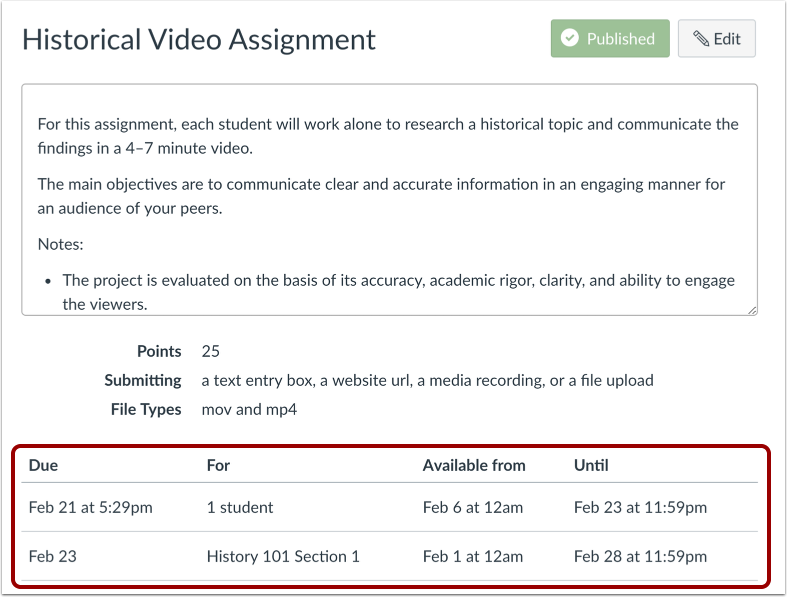
Assigning a project in Canvas (Source)
You can save money on instructional materials by reusing e-learning courses and assets and leveraging content from around the web or from your own students. If you can move certain classes to a fully digital approach, you also eliminate the need for classrooms, desks, whiteboards, and projectors.
Add this all up and you’re looking at significant savings down the line.
2. An LMS saves you time
Instructors spend hours grading, long after the school day is over. Automatic grading capabilities in an LMS will grade those multiple-choice assignments and quizzes for them—eliminating a major teacher time-suck.
That’s not the only way an LMS saves time. An LMS stores all of your courses and assignments in a single database with the ability to tag all of the material by school year, subject, time created, and more—which can significantly cut down on time spent simply staying organized.
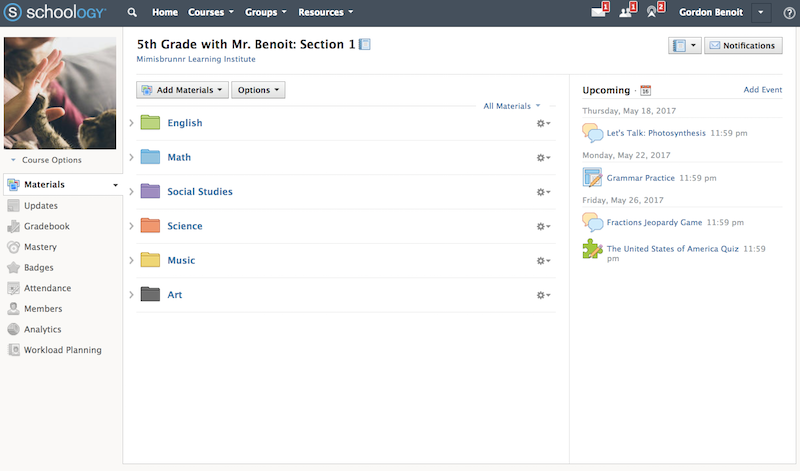
Organizing grade materials in Schoology (Source)
Then there’s the time spent on actual instruction. Virtual classrooms—with their ability to hold more students than traditional ones—enable teachers to forego repeating lessons due to class-size constraints. Dedicating time for students to consume e-learning courses on their own also frees up instructors to focus more attention on individual learner needs.
3. An LMS produces better student outcomes
Face-to-face instruction, through a virtual classroom, allows students to get the individual attention they need. Self-paced learning, enabled through e-learning courses, gives students the flexibility to learn in the pace and style that works best for them.
Combine these two modes of teaching through an LMS to create a blended learning environment and you literally get the best of both worlds.
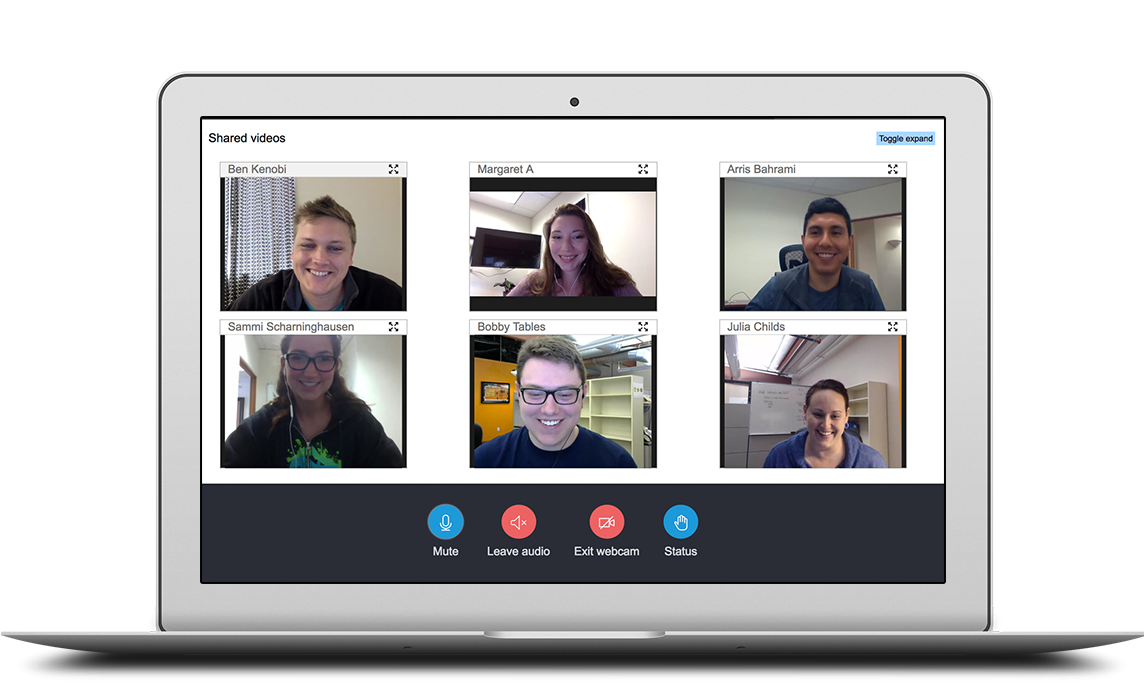
Hosting a virtual classroom in Brightspace (Source)
Studies have shown that this blended learning approach not only improves grades and reduces student anxiety compared with a more traditional approach, but also aids in knowledge retention.
4. An LMS gives you flexibility
The traditional classroom confines in more ways than one. Not only does everyone involved have to be in the same place at the same time, but teachers have no choice but to present the information to every student in a single format (which may not be the ideal format for everyone).
An LMS expands the possibilities. By leveraging disparate content formats—presentations, webinars, videos, podcasts, games—students get more options for how to learn the material. Students can also access the LMS from a phone or tablet at any time of day, giving them flexibility into when and where they learn.
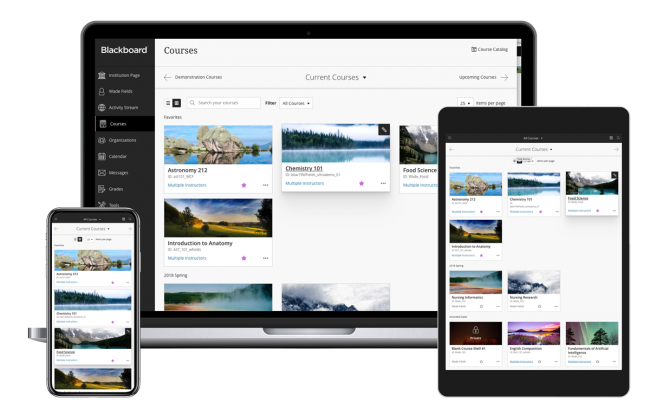
A course library on multiple devices in Blackboard Learn (Source)
Additional tools such as discussion boards and microblogs give learners options for getting different perspectives on the material and collaborating with classmates.
5. An LMS unlocks deeper insights
In a traditional school setting, teachers and administrators only have so much data to work with to identify gaps or areas for improvement: grades, attendance, test scores, and performance reviews.
With learner analytics in an LMS system, your school or university gets access to much more in-depth data to make decisions. Metrics detailing how individual students are interacting with courses, what devices they’re using, how much time they’re spending on assignments, and even where they’re clicking in the system can point your team in the right direction to improve the learning experience.
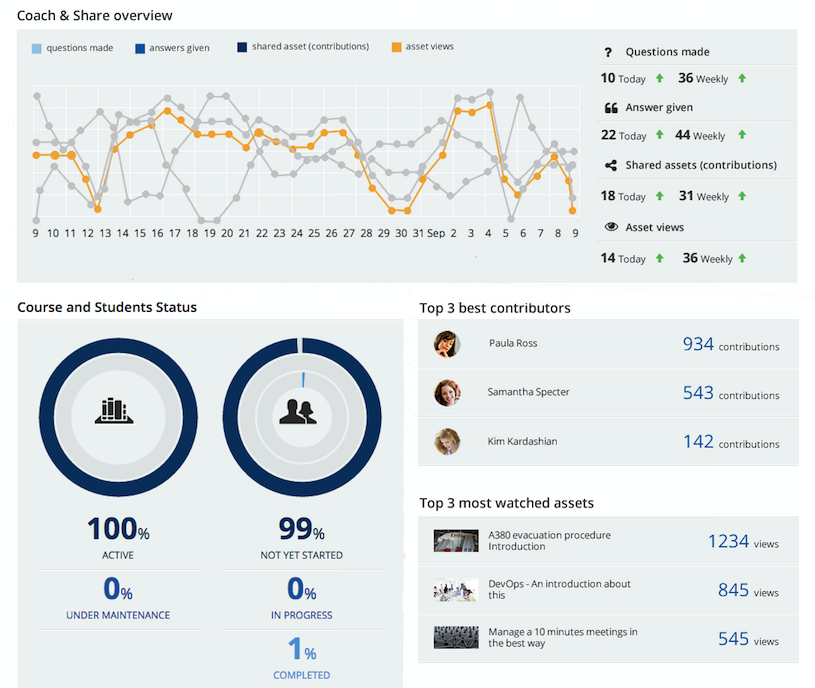
An instructor dashboard in Docebo (Source)
And that’s just the data the LMS is automatically tracking on the back end. Schools and universities can use their LMS to proactively gather even more data to better their institution. For example, students can rate courses and administrators can create and send routine “pulse surveys.”
We’re here to help with your LMS transition
An LMS will immediately benefit schools and universities looking to continue their curriculum during the COVID-19 crisis. But this technology brings long-term benefits too: saving time and money, producing better student outcomes, adding flexibility, and enabling deeper insights.
Doing the work to find and implement a system now will pay dividends down the road. But we know this is a stressful time, and figuring out the details of a long-term software investment is the last thing you want to have to worry about.
So let us help. You can chat with one of our knowledgeable LMS advisors right now, for free, and they’ll send you a shortlist of best-fit systems based on your needs. You can also schedule a phone call for a later time, if that’s easier.
Head to our LMS page to start exploring your options today.
Note: The applications selected in this article are examples to show a feature in context and are not intended as endorsements or recommendations. They have been obtained from sources believed to be reliable at the time of publication.